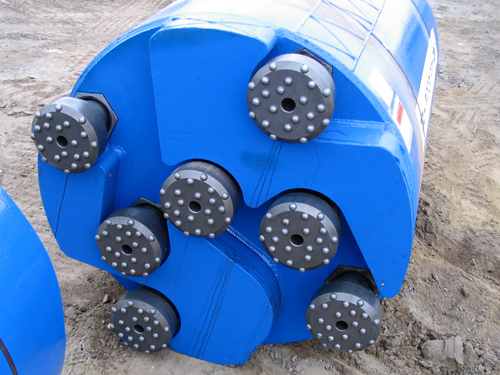The amazing story of 33 miners rescued from Empresa Minera San Esteban’s San Jose copper-gold mine near Copiapo, Chile, captured the hearts of millions around the world since the mine workings around them collapsed on Aug. 5, leaving them stranded 631 metres (2,070 ft.) underground.
After 69 days underground, the men emerged in great shape considering the circumstances, walking confidently, smiling their biggest smiles and hugging tearful family members.
Until Oct. 12, no one in a modern mining scenario had ever been trapped underground for so long and emerged alive.
The story struck a chord that resonated with people around the world. Copiapo and the mine site were converged upon by more than 1,200 reporters, photographers and camera operators from more than 300 media organizations from 40 nations.
The rescuers’ activities and miners’ personal life stories were reported upon in great detail, and the final days’ activities were streamed live on the internet. At presstime, 19 of the 33 miners had been brought to surface.
Throughout the ordeal the men kept a logbook – originally started to let loved ones know how they lived their last hours – that will now form the basis of a book they will write together.
Indeed, their latest plan was to limit somewhat their media exposure in order to boost income from their book, movie rights, etc. One miner commented that none of them would ever need to work again if they played their hands correctly and told their tales with some financial savvy.
The drilling company Center Rock of Berlin, Pa., was called upon by the Chileans for their advanced drill bits and drilling technology. Center Rock CEO and founder Brandon Fisher was onsite to direct the drilling efforts, the first task of which was the drilling of a 12-inch-wide pilot hole into the area where the men were trapped. (See photos of the larger drill here http://twitpic.com/2w4drc and here http://twitpic.com/2w4c0v.)
Drilled at an incline in order to avoid drilling through existing mine workings, the first small-bore hole, which reached the men 17 days into their ordeal, was used to pass nourishment, medicine and other life essentials below, including messages from loved ones and video cameras for return messages.
Center Rock then drilled a much-wider-diameter rescue borehole, which was lined with 56 metres of protective steel.
Center Rock, which built the drills used in the rescue, describes them as using a pneumatic-driven air-compression drilling system that used four hammers instead of just one. It called the Chilean mine rescue a “difficult project in extremely hard rock.”
Fisher said there was “no way for us to know how long this would take, but progress has been excellent, months ahead of the original projections to reach the trapped miners. We were drilling in extremely hard rock; the breakthrough today is a major milestone in bringing the miners to the surface.”
The rescue had more than just a feeling of a space expedition to it: Chilean authorities also welcomed a contribution by NASA engineers from the U.S. to work with the Chilean navy to build a 1-man steel rescue pod from scratch.
Dubbed the “Phoenix” and painted in the colours of the Chilean flag, the capsule weighs 420 kg and is 1.9 metres long. It comes with an oxygen supply, communications equipment, an escape hatch and retractable wheels. It has been lowered and raised through the escape shaft using a giant crane mounted on a nearby hill.
The friction-inducing inclined rescue passageway resulted in a slower pace of rescue: about one miner per hour was able to be brought to surface. However, overall, drilling progress was excellent, as it had first been anticipated that the miners might not be rescued until Christmastime.


Why no mention in the editorial about the “other” two shafts being drilled. There were three rescue plans: A, B and C. Center Rock drilled Plan B, why no mention of the others?
More on this…